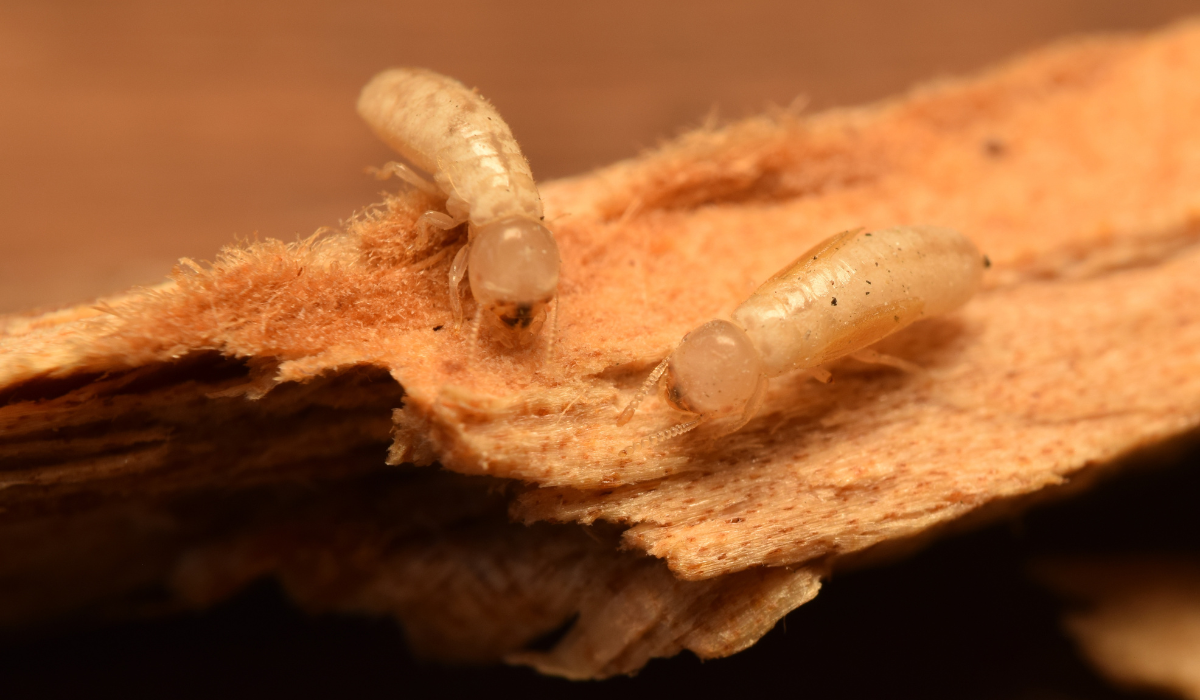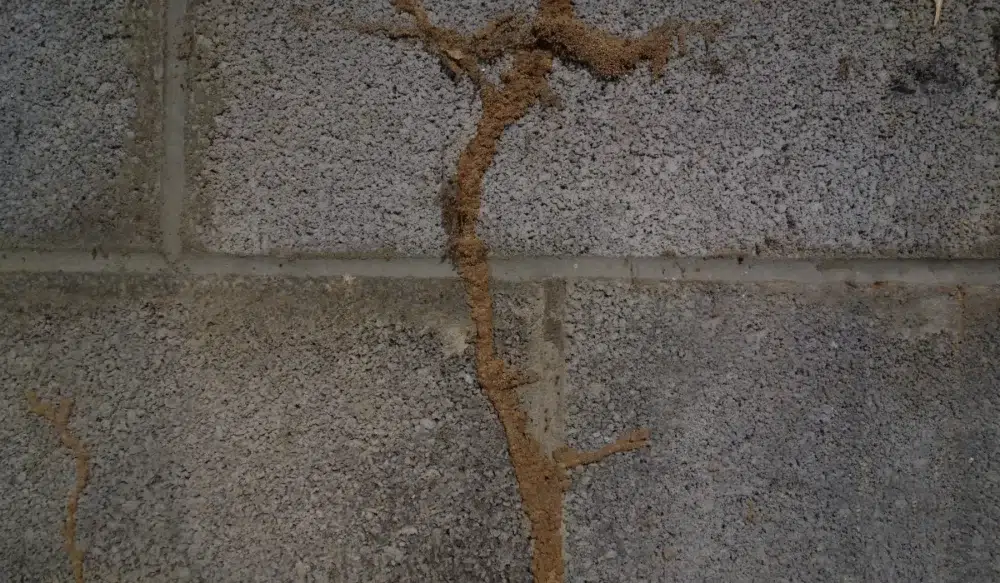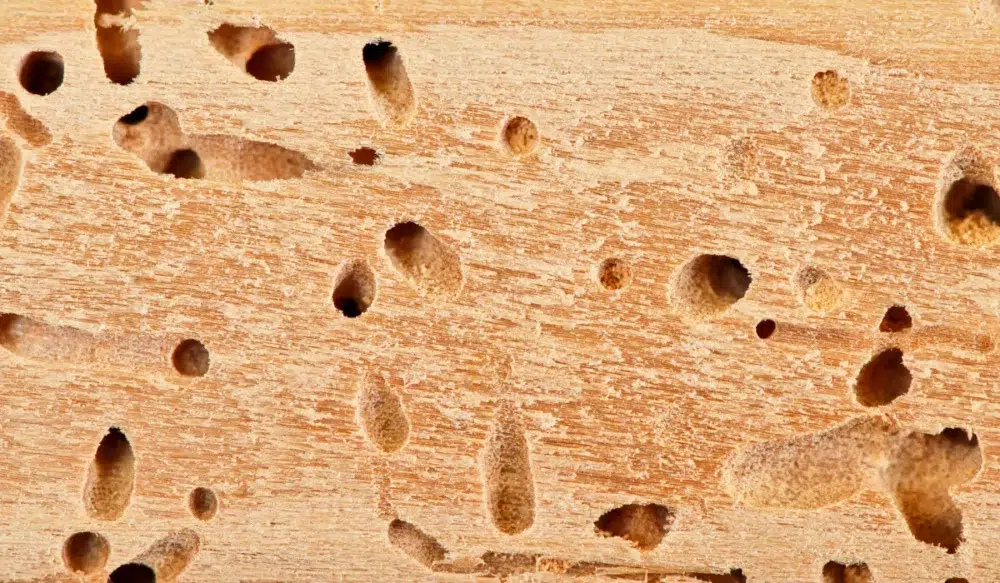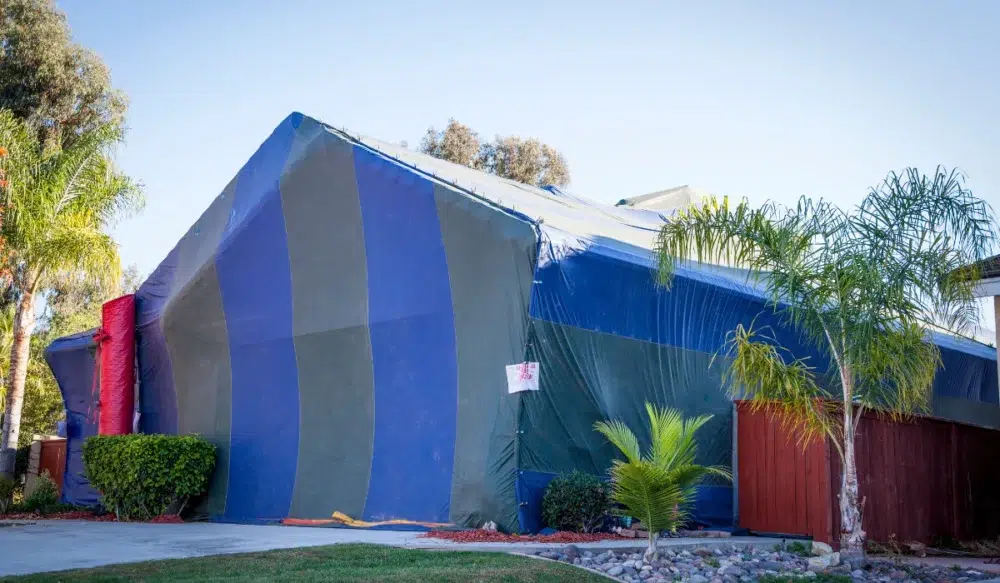If you’re a homeowner in Arizona and you’ve spotted termite droppings, flying swarmers, or strange pinholes in your walls or window sills, you might be worried you need tent fumigation. Nobody wants to pack up their home for a major termite treatment.
So, here’s the big question: Can you treat drywood termites without tenting?
The answer is yes, but it depends on many things.
Key Takeaways
- No-tent termite treatment is possible when the infestation is small, easy to reach, and found early.
- Spot treatment, orange oil, boric acid, and heat work best for minor termite activity in visible wood.
- Tent fumigation is often needed when termites spread, hide in walls, or keep coming back.
- Help from a pest control company and early inspections can stop termites before they cause serious damage.
Is It Possible to Treat Drywood Termites Without Tenting?
Drywood termites can be treated without termite tenting in many cases. Several non-tent methods are available that may eliminate the infestation, depending on its size and location.
Let’s take a closer look at what makes it work, and when it might not be enough.
Spot Treatments Are Great for Small Infestations
Spot treatment is one of the most common non-tent methods.
A technician finds the infested area, drills small holes into the infested wood, and injects the product right into the termite galleries. This targets the termite colony directly. It’s fast, easy, and doesn’t require you to leave your house.
Just keep in mind that treatments only work if the problem is caught early and isn’t spreading.
DIY Options That Help in Some Cases
For DIY fans, orange oil and Diatomaceous Earth are popular, eco-friendly choices. These are often used as direct treatments or repellents. Orange oil can kill active termites on contact, and boric acid affects how termites digest food.
But these treatments only reach the termites that come into direct contact with them. They won’t soak deep into walls or floors where termites might be hiding, so they’re best for very small or visible infestations.
Heat Treatment Works if It Reaches the Whole Area
Heat treatment involves heating the infested area to a high temperature—usually around 120 to 130 degrees Fahrenheit. This can kill all stages of termites inside the wood, from eggs to adults.
But if parts of the colony are in places the heat can’t reach, like deep in a crawl space, the treatment won’t work as well. It’s best when you know exactly where the termite problem is.
Here’s a quick comparison of termite treatment options to help you decide which one fits your situation:
| Treatment | Best For | Pros | Cons |
|---|---|---|---|
| Spot Treatment | Small, localized infestations |
|
|
| Orange Oil | Very minor, visible infestations |
|
|
| Boric Acid | DIY prevention or surface treatment |
|
|
| Heat Treatment | Infestations in accessible, known areas |
|
|
| Tent Fumigation | Widespread or recurring infestations |
|
|
When You Still Need Tent Fumigation
Sometimes, tent fumigation is the only real option. This process uses gas that reaches every corner of your home, even inside walls, so it kills all colonies, even if they’re spread out or hidden.
It’s not the most convenient, but it’s often the most effective termite solution for large or older homes.
Here are some situations where it may be necessary:
The Infestation Is Widespread
When drywood termites have taken hold in multiple areas of your home, spot treatment or localized methods likely won’t be enough.
If colonies are active in different rooms or throughout the structure, tenting is often the only way to reach every part of the problem at once.
The Termite Activity Is Hidden or Hard to Reach
Termites often nest deep inside wood structures, behind walls, or in tight crawl spaces.
If the colony is tucked away where traditional methods can’t penetrate, fumigation ensures the treatment reaches those protected spaces.
The Home Has Ongoing or Repeated Infestations
If your home has been treated in the past but termite activity keeps returning, there may be new colonies forming or lingering termites that survived.
Tenting offers a reset by eliminating all termites throughout the house, including any missed by earlier methods.
The House Is Older or Built With Complex Architecture
Older homes or houses with complex designs (like vaulted ceilings or built-in cabinetry) often have more nooks where termites can hide.
These features can block heat or liquids used in no-tent termite treatment, making tent fumigation a more reliable option.
Prevent Future Drywood Termite Infestations with Early Detection
Watching for signs of termites is key.
Keep an eye out for frass (termite droppings), hollow-sounding wood, or swarms of flying termites. Finding problems early can save you from a major infestation and costly repairs.
Termite control can also help by offering preventative treatment options.
This could mean sealing cracks, removing termite food sources, and treating the home’s perimeter. A strong pest management plan makes a big difference.
Concerned About Termites? Start with a Free Inspection
If you’re seeing signs of drywood termite damage, don’t wait.
At Green Home Pest Control, we offer pest control services that fit your home and your needs. Whether you’re looking for no-tent options or just want a second opinion, we’re here to help.
We service homeowners across Phoenix, Scottsdale, Chandler, and Tucson, and we offer a free inspection to get you started.
Call us today to protect your home from future infestations.




